Motorola Moto G Review
by Brian Klug on December 18, 2013 2:00 PM EST- Posted in
- Smartphones
- Motorola
- Mobile
- *VA
- Cortex A7
- snapdragon 400
- Moto G
Display on mobile devices is one area where we’ve seen considerable improvement. Pixel density has gone up, contrast ratios have improved, and the emphasis on low power in a platform gated by its battery size means there’s always innovation happening. In the case of the Moto G, what we’re after should really be a display that looks visually appealing without any of the egregious issues that plague most midrange devices – poor viewing angles, low resolution, low contrast, dim displays.
On paper, the Moto G has what would probably have been a flagship display for a mobile device a year or two ago, it’s a 4.5-inch LCD with 1280x720 resolution and 326 PPI pixel density. The comparison point is the Moto X with a 4.7 inch AMOLED panel of the same 720p resolution and 312 PPI pixel density.
I’m pretty impressed with how the Moto G’s display looks. Subjectively, viewing angles are good, there aren’t any of the issues I normally attribute to non-flagship devices either with low pixel density or contrast that fails to please. There’s no light leakage at all from any of the corners.
One unfortunate thing about the Moto G I was sampled however is the presence of two small bubbles in the cover glass. I initially thought these were dust, but inspection with a microscope reveals they are in fact inhomogeneities in the cover glass.
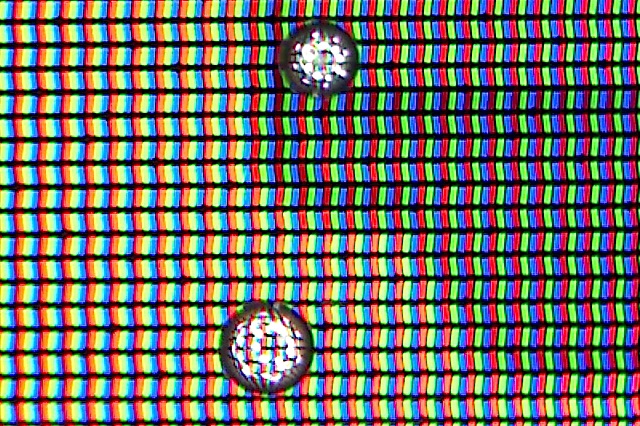
I’m not sure whether these kind of defects are within spec for the Moto G, but they’re distracting and visible on most solid colored UIs or views. I’ve never seen something like this on any handset I’ve reviewed to date.

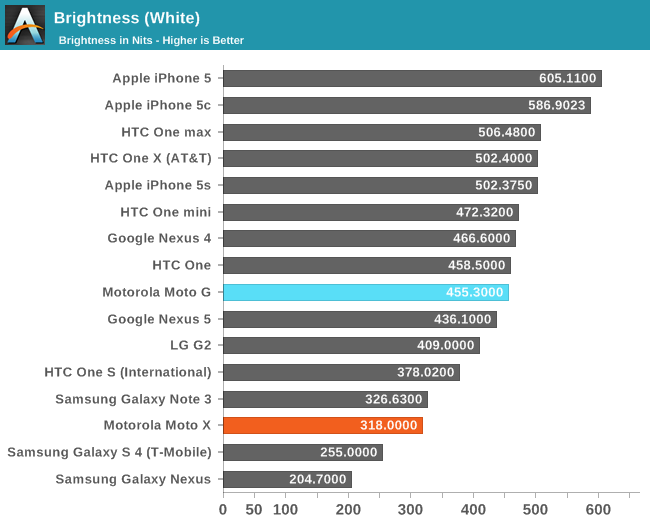

The Moto G goes plenty bright, at just over 455 nits, and delivers contrast numbers that are pretty darn good for the price point at just shy of 1200. Normally black levels are out of control on the lower end devices, I’m not sure if the Moto G uses an IPS panel, but suspect it does.
Upon inspection I immediately noticed that the Moto G display was very, very blue. To measure color accuracy we turn to the same combination of measures that we have used for a while now.
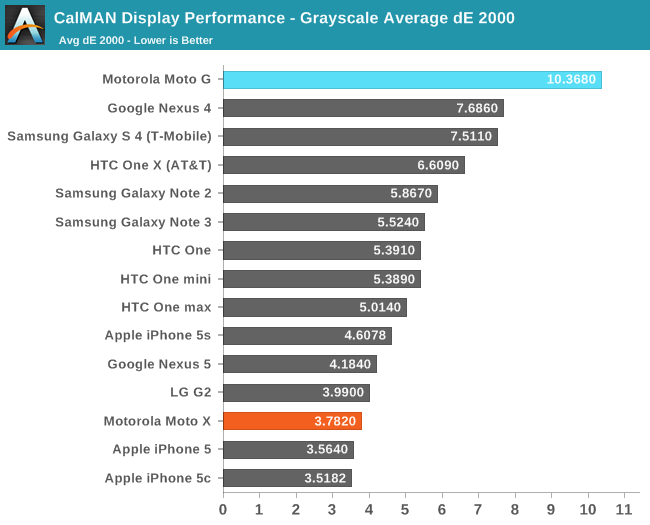
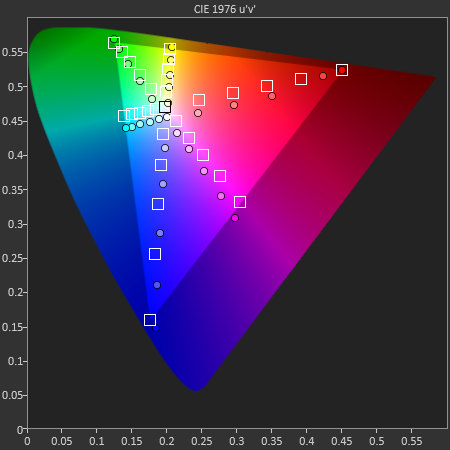



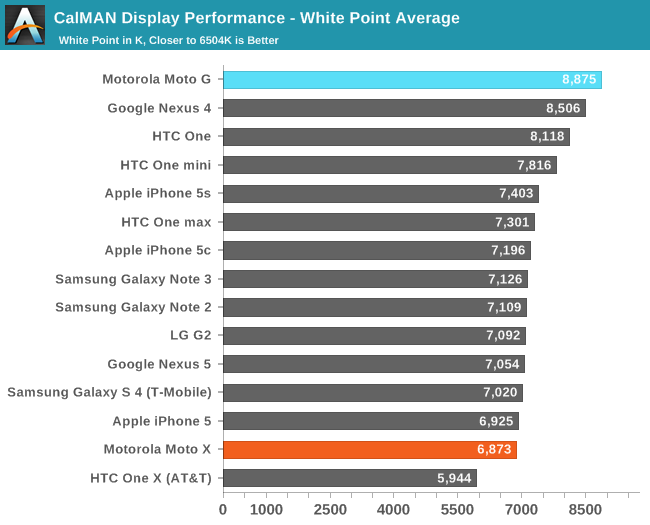
My comparison points are unfortunately primarily high end devices, which makes the Moto G look comparatively poor. The Moto G display tuning is indeed very blue with a white point of nearly 9000K, but I wouldn’t be surprised to learn this is a function of the backlight LEDs used or intrinsic properties of the panel.
Color calibration is something we’ve only just now started to see get taken seriously on the high end devices, if we can’t expect it to be a regular staple there, the midrange is obviously a lost cause. I wouldn’t fault the Moto G for not being very accurate, but it is something to be aware of as a sacrifice at this price point if you’re considering it over a high-end phone. On the flipside, the pixel density and contrast of the Moto G’s display seems excellent given the price, and I suspect the defects in my Moto G’s cover glass are specific to this unit.



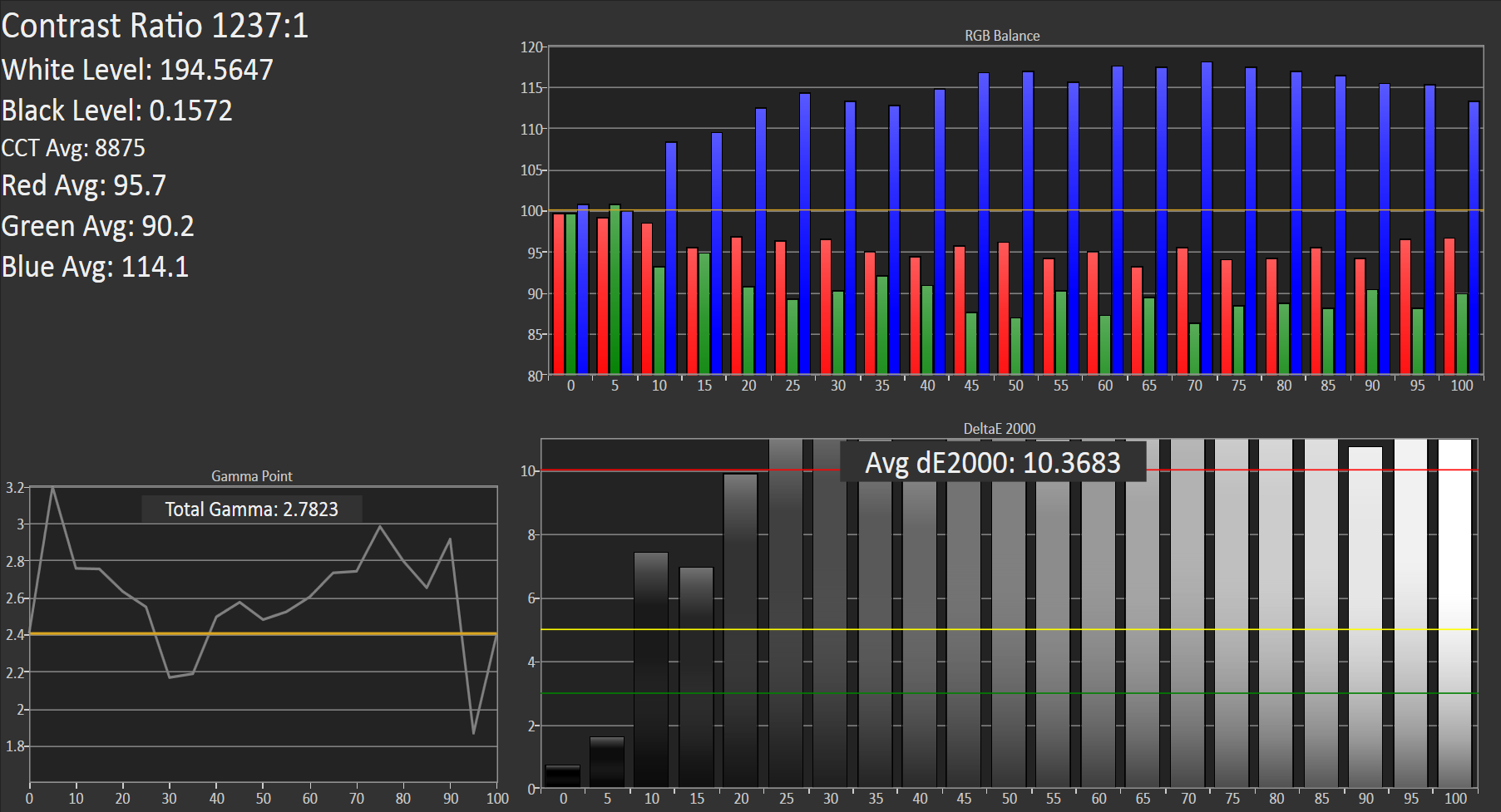








120 Comments
View All Comments
makken - Wednesday, December 18, 2013 - link
" LG was arguably first to lay claim to it with its Optimus G, G Pro, G2, and now G Flex brands"Are we not counting the HTC G1 and G2 now? :(
blanarahul - Wednesday, December 18, 2013 - link
Htc is almost dead. I hope Lg buys them. That will give Samsung a run for their money.blanarahul - Wednesday, December 18, 2013 - link
Great review though. Although buying Moto in my country is just as good as buying a Chinese cellphone. There just aren't service centers around here.Flunk - Wednesday, December 18, 2013 - link
The do have service centers for other brands? You're a lucky guy, we need to ship our phones back to god knows where for service. My buddy's Samsung phone ended up in Korea for service.blanarahul - Wednesday, December 18, 2013 - link
I have only used Nokia, Sony and Samsung customer service. But I believe LG has good customer service too. I live in India. Sending to Korea would be a big pain in the ass.spencersears - Friday, October 3, 2014 - link
Motorola Moto G is a fantastic phone, I'd say only HTC One M8 could match up to it (see http://www.consumertop.com/best-phone-guide/). I don't think you'll need much of a service center though (I've not heard anyone who's had trouble with it), but the choice is yours.puremind - Thursday, December 19, 2013 - link
HTC has no reason to be dead any time soon. Like Apple, they will increasingly have to Focus on the premium market Segment (though for different reasons). HTC's supplier Rating and lack of Advertising Budget is the only reason they cannot compete well with Samsung, LG and Sony for the lower and mid range, but they will continue to produce superb devices for the top tier consumer segment.Nagorak - Tuesday, December 24, 2013 - link
They just reported their first loss ever. If they don't turn things around and keep losing money then that is the reason they'll be dead. Companies don't exist to lose money.BallGum - Saturday, December 28, 2013 - link
Yeah, it's quite a shame this is happening. The HTC One is a brilliant phone but despite everything they're just losing sales to Samsung. It's startling how they slipped from being where Samsung is now, but them consider Nokia...jasonelmore - Thursday, January 2, 2014 - link
It doesn't make financial sense to buy them unless they have tons of patents which are valuable to LG,